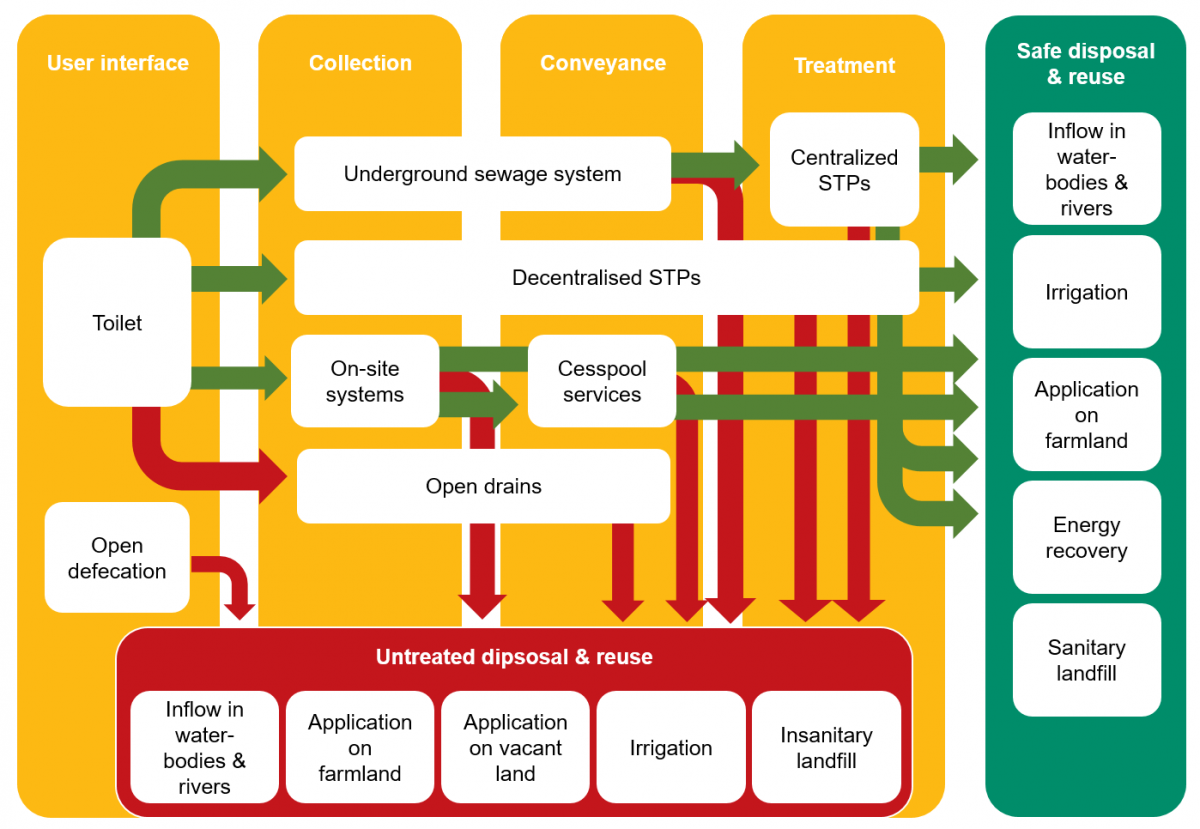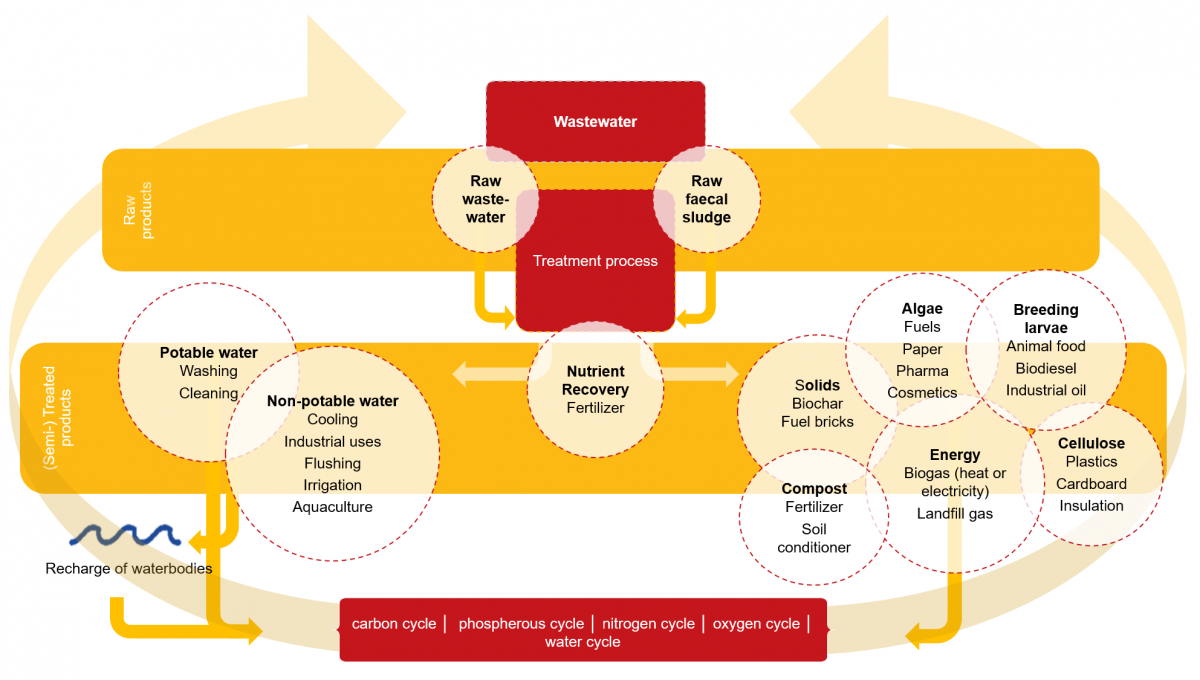From Linear to Circular: A Paradigm Shift in Wastewater Management
by e -
Bangalore is one of the fastest growing cities in the world, and has become a poster child for the problems confronting urban India. Rapid, and often unplanned urbanisation has led to stressed urban infrastructure and lack of basic service delivery. Whilst this pattern of urbanisation brings many challenges, wastewater, or sewage management remains one of the most critical yet neglected areas. As in many Indian cities, Bangalore’s urban wastewater management systems presents a grim picture with severe infrastructure gaps along the value chain with financially strained municipal service providers being unable to meet increasing service demand.
Improper and inadequate wastewater management is pervasive with regular incidences of release of untreated wastewater and effluents into rivers and lakes polluting these ecosystems. The “fiery” Bellandur Lake, and dead fish at Ulsoor Lake are prominent examples of the deterioration of these natural ecosystems. Furthermore, these contaminated waters increase the risk of water borne diseases in neighbouring regions.
While the impacts of improper wastewater management are visible, a corresponding lack of data makes it difficult to define the gaps in Bangalore’s wastewater infrastructure and services are. Furthermore, social costs and other negative externalities due to water pollution also remain difficult to quantify at a city scale.

Figure 1: Kristina Egge
Bangalore’s wastewater flow diagram identifies various methods of wastewater management from the user interface (toilet availability), collection, conveyance and treatment to its final disposal or reuse. Red arrows show unsanitary practices while green arrows depict sanitary systems – if they are well maintained. Bangalore Water Supply and Sewerage Board (BWSSB) claims to treat 520 MLD out of 1400 MLD wastewater generated in 14 centralized Sewage Treatment Plants (STPs). There is no official data available about the path of the remaining 63% wastewater which is not treated in these centralized STPs.
Bangalore’s unabated growth has led to a constant increase in its demand for fresh water; and concurrently, the volumes of wastewater generated have also increased. However, wastewater can be a valuable resource as it contains a host of nutrients and resources which – if recovered – can offer various economic returns. Furthermore, water recovered from wastewater treatment can be substituted for fresh water in industries and commercial spaces decreasing withdrawals from fresh water sources.
Conventional systems continue to see wastewater management as a financial burden rather than an opportunity to generate new revenue streams. This is now changing; but to find holistic and sustainable solutions to address the increasing demand for water, rethinking current approaches on urban wastewater is required.
Changing the way we think about wastewater management
What would happen if we transform our perspective on wastewater management from a linear ‘use and dispose’ model to a more sustainable circular model, attaching values to the resources in wastewater flows?
A starting point could be to look at wastewater treatment not as an expensive cost centre, but as a value-generating resource. It could open up the possibility to find innovative solutions that recover various resources to incentivise wastewater treatment and help to reduce costs, maximize material efficiency, and reduce the carbon footprint. Wastewater offers a range of possibilities for reuse and recovery of resources. The graph below illustrates reuse possibilities of liquid component of treated wastewater and also the potential of treated faecal and wastewater sludge as cooking gas or fuel for industries, manure, or biodiesel for transportation.
Case studies on different approaches and models of reuse and resource recovery from wastewater exist globally on different scales in countries of all development stages. For example, in Kumasi, Ghana, a pilot project demonstrates the benefit treatment of faecal sludge and organic solid waste for reuse in agriculture. WRI China has recently analysed the potential for sludge-to-energy systems in Xiangyang, China, and examined the positive environmental and economic impacts of this model. In Nashik, an integrated nexus-approach of wastewater, energy and agriculture wastewater and organic solid waste is being adopted to improve the city’s resource management; and in Europe, the European Commission funds projects that demonstrate innovative technologies and solutions that upgrade or convert wastewater treatment plants into production units for energy, nutrients, water for re-use and possibly other commodities.
Despite these global examples, initiatives in Bangalore and in other cities in India are still nascent. But with increasing stress on the availability of water and other resources, resource recovery and circular economy practices in the wastewater sector can be critical to make urban areas sustainable. We at WRI are chronicling a few cities in India who are leaders in the wastewater sector and have already implemented systems for energy recovery and fertilizer enabling them to simultaneously meet treatment criteria and generate revenue.
 Figure 2: Kristina Egge
Figure 2: Kristina Egge
A circular approach to wastewater management can include innovative high-end technologies as well as basic practices in terms of end-use of liquid components (water) as well as solid fractions (sludge).
--
Kristina Egge is an intern at WRI India, working on urban water issues, with a focus on circular economy pathways for wastewater management. She is currently pursuing her master's degree in Economic Geography at Leibniz Universität Hannover, Germany.


